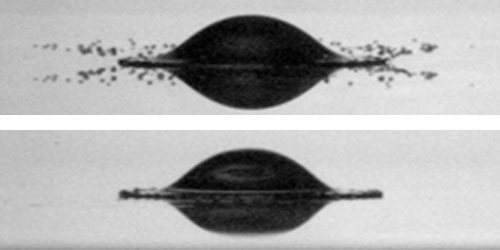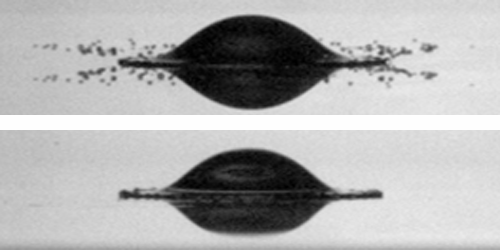Suppressing the Splash
When a droplet impacts a hard surface, it splashes, ejecting liquid fragments in every direction. This is fine if the fluid needs to be distributed over a wide area, but isn’t so great in hospitals that need to stay sterile, or in applications involving toxic fluids. Now researchers have shown that a drop’s splash is suppressed if the surface is made of a soft material, like a gel or a rubber.
Robert Style, from the University of Oxford, UK, and colleagues bombarded a series of soft silicone gels of varying stiffness with drops of ethanol and compared their splashing behavior to that of drops impacting a hard surface. During the initial impact, the drops behave in the same way for all surfaces: The drop flattens and starts spreading out like a pancake. For hard surfaces, this outer, thinner rim of fluid then breaks up into a fine spray of tinier drops. For softer and softer surfaces, the spraying decreases until eventually the pancake stays whole. According to the group’s simulations, the deformation of the soft surface during the first 30 s of impact is what’s behind splash suppression. This deformation absorbs just a few percent of the drop’s kinetic energy, but can be sufficient to keep it intact.
The team found that splashes can be generated on soft surfaces, but the height from which the drops have to be released is nearly twice that required to get a splash on a hard surface.
This research is published in Physical Review Letters.
–Katherine Wright
Katherine Wright is a Contributing Editor for Physics.





